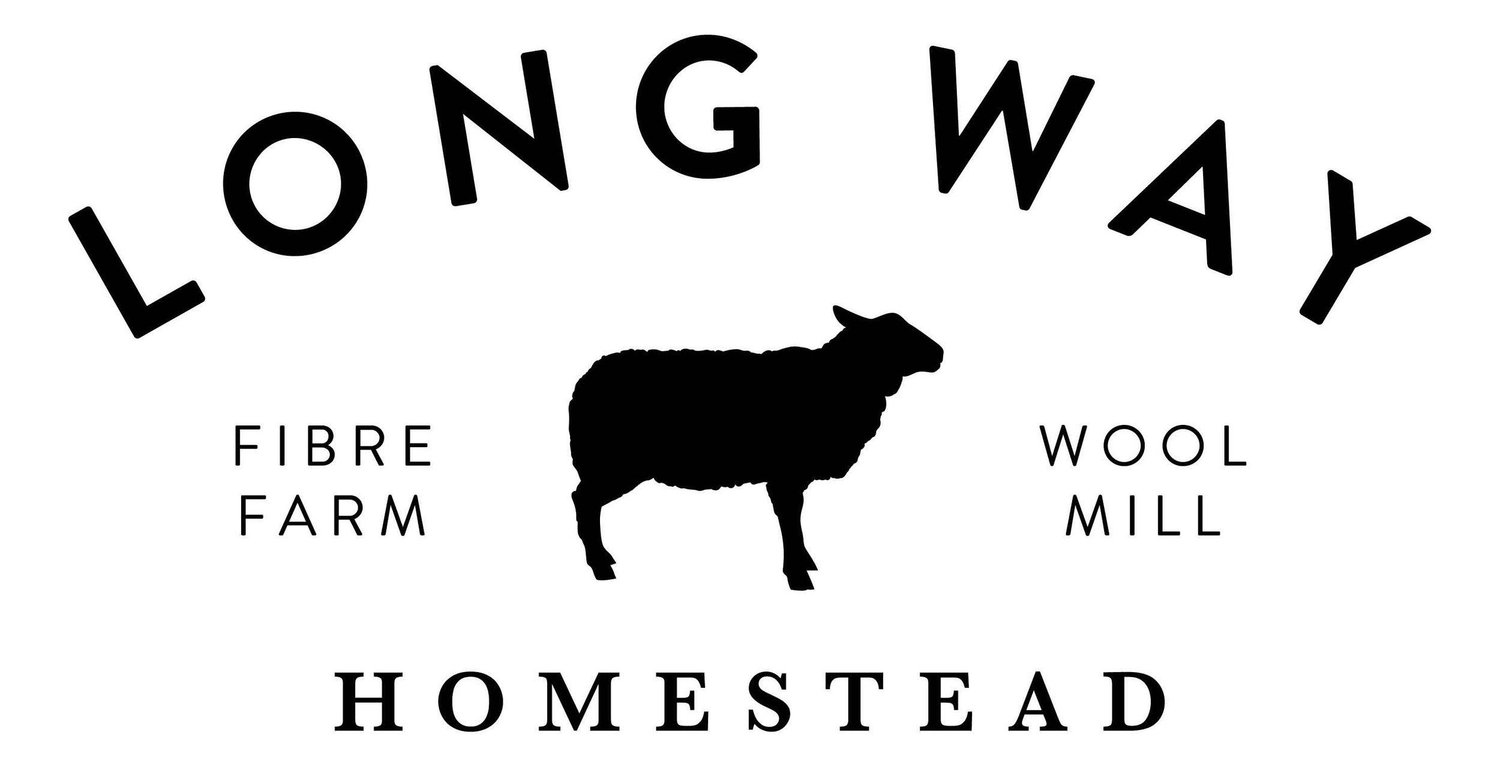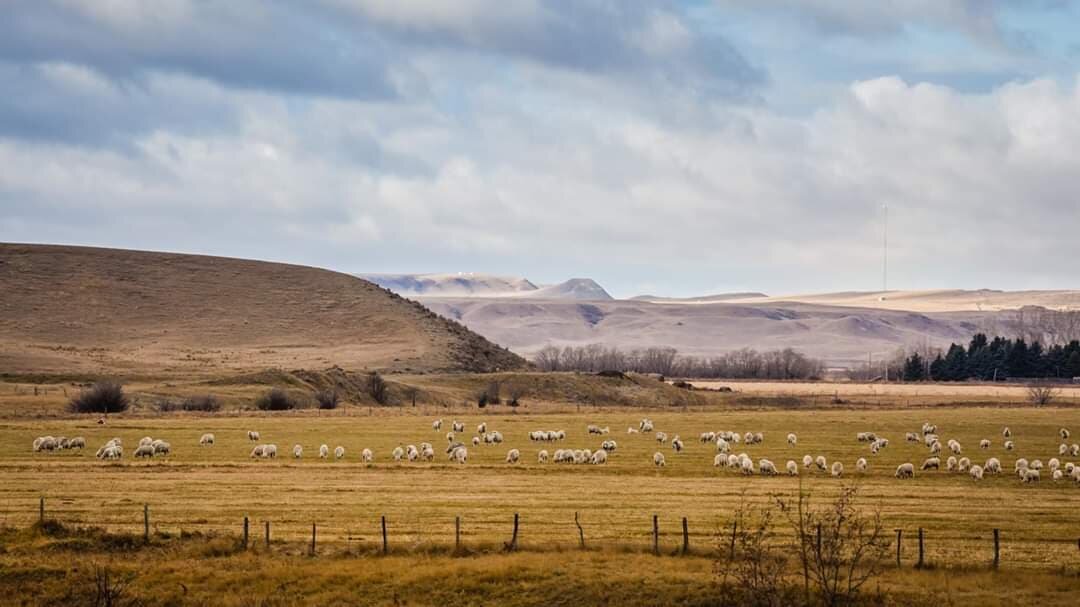During this time of economic and social upheaval, every industry across Canada has been adversely affected. The wool and textile industry is no exception. The highly centralized wool supply chain systems is exposed as fragile and lacking resiliency in the face of disaster. The global wool market has seen a total shutdown as markets for wool have halted due to the pandemic and mills have closed. The long-term effects this will have on all players in the wool supply chain, including farmers, textile manufacturers, and the yarn industry as a whole, is devastating.
Photo by Lisa Mckinley Surber
“Global demand for raw wool was weak before Covid-19 restrictions were imposed for travel, social, and commerce. As a result wool trading conditions have continued to deteriorate or are non existent at the present time due to the high level of uncertainty that exists in the marketplace.” states Eric Bjergso, General Manager for the Canadian Cooperative Wool Growers, in a statement on April 27, 2020. The majority of sheep farmers in Canada sell their wool to Wool Growers every year and more than 90% of this wool is exported and manufactured in China, Egypt, Czech Republic and the USA. The statement also warns that wool payments will not be available until stability returns to the global marketplace and Canadian wool is once again being purchased. This is devastating news for sheep farmers who are already in precarious financial situations as meat markets crash due to the pandemic.
Targhee Sheep Flock in Southeastern Saskatchewan. (photo and flock by Dwane Morvik)
Many of us have turned to our needles, hooks and spinning wheels during this time as a source of comfort, distraction and peace. But have we paused to think about where our wool comes from and who is involved in getting it from sheep to skein? How are the farmers going to continue growing good wool if they aren't being paid for it? How will wool brokers purchase and sell wool if the markets are closed? And what will it look like if wool is sitting in warehouses around the globe rather than being processed and shipped to our favourite indie-dyers?
Perhaps the more pressing questions are: why have we left the production of this incredible resource to such a broken, fragile system? Why have we allowed the growing and processing of our food and clothing to be so far removed from our communities? Is there a path to shrinking the supply chain? Or better yet, adding value to our wool and textile systems?
There is a global movement called Fibershed that works to build resilience into our textile and wool systems. “In describing a fibreshed, we focus on elements in our region that contribute to the ways we create fabric for clothing and other household uses. We connect producers, processors, artisans, and consumers in a dynamic system that sustainably manages resources and strengthens our ties to the land.” (From the Pembina Fibreshed)
Much of our days are filled with concern and insecurity about what the future may bring for us individually or as a country. Now is the time for constructive conversations about how to build different systems that will sustain us and our landbase now and in the future.
4 ways to build resilience in our Canadian Fibreshed:
1) Connect with and support the producers, farmers, designers and dyers, using local plant material, in your area.
Imagine the power and resiliency we would see if our geographical areas had the capacity and support to grow, manufacture and distribute our textiles! Communities like this could continue to function despite global disturbances. This would support farmers, mills, dyers, designers, local yarn shops and build stronger communities.
This is a great time to purchase wool or roving from a local farmer or mill. Take an online class that teaches you how to use the natural dye material from your area to dye wool. Reach out to a farmer and buy a full fleece and learn to wash it in your backyard!
Find out if there are farmers in your are utilizing carbon farming practices and support them. Purchasing food and fibre from farmers that prioritize climate beneficial products will have a longer-term effect on building resilience in both our textile systems, but also in our ecological systems.
2) Join your local fibreshed, or initiate one in your community.
Many communities already have fibresheds that support local producers and organize events and workshops that focus on the issues facing specific regions across Canada. Join these organizations, attend their events or start your own. Fibershed California has all the resources necessary to start your own fibershed and make connections with local farmers and producers. (See below a list of Canadian Fibreshed organizations)
Photo by Christel Lanthier
3) Demand justice and equity in our global and domestic textile/wool industry.
Due to the shutdown of our textile supply chain many factories and workers have not been compensated for work that has already been completed. We need to push corporations and governments to compensate workers appropriately and we need to advocate for a reorganization of our supply chains to promote equity for all.
We need to push for a a national conversation about Canadian wool manufacturing and how to localize the production and distribution without relying on unstable global markets. This will not only build resilience for Canadian farmers and manufacturers, it will also help reduce our carbon emissions. By prioritizing localized production in facilities with more stringent environmental policies, we can shrink the supply chain and reduce the transport and resource consumption involved in manufacturing Canadian wool elsewhere.
4) Make, Do, Mend
This time has reminded us that we do not need as much as we consume. Many have dusted off sewing machines to make masks, or to help our kids learn different skills. By making do with what we have, mending what can be repaired and making our own clothing we are building resiliency in our homes, our lives and our communities.
Photo by Christel Lanthier
Canadian Fibreshed Organizations
Other Fibreshed Organizations
From Field to Skin (an excellent resource of Canadian Farmers and Mills)






